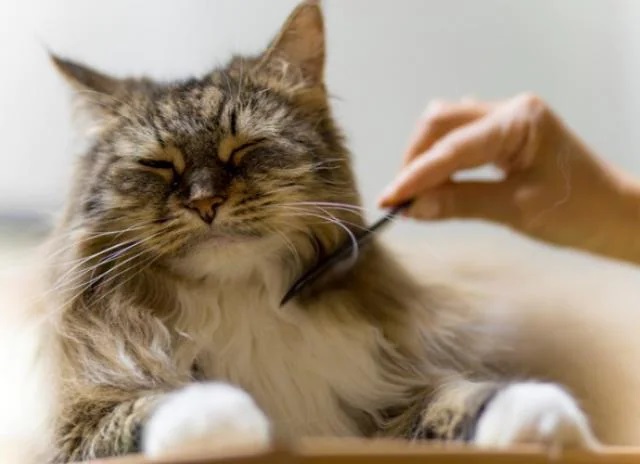A clean is always a happy cat. From bathing to trimming nails, the maintenance for the cats goes on a long way. Grooming your cat is an entertaining process and allows the keeper to clean their pets and maintain personal hygiene at home.
Let’s know how you can groom your cat at home:
Brushing:
Cats require regular brushing to keep their coats tidy, especially for those who have long fur. Regular brushing helps in removing dirt and also tangles. Keepers can also spread healthy oil on their fur coats to keep their fur and skin healthy and eliminate irritation.
Cats having short hair required brushing at least a week:
- With the help of a rubber brush and bristle, comb your cat fur and remove all dead hair.
- Try using a metal comb for loosening dead fur and start from the head and move along the tail.
- Be careful around their cheer, face and belly as these parts are quite sensitive.
Skin Issues:
The cat’s skin condition is an indication of her health. If there is a skin issue, you can see your cat responding with excessing licking, scratching or chewing. There can be a wide range of causes like allergies to environmental changes and external parasites as they can affect your cat’s skin, and a thorough investigation is required to get rid of these issues. Skin problems are some of the common issues why pet parents routinely visit the vets.
Ears:
Have a look through your cat’s ears and try to detect issues including dirt in ears, debris, bleeding, excessive wax building up, inflammation or discharge. Some of the concerns here are ear mites at times, which can be quite harder to see, especially when they leave a brown or reddish discharge in your ear and cats; these ear mites can cause scratching too. You can also have a look at online stores like PETstock to purchase their supplies any hour of the day.
Although a little bit of wax can be treated as normal, no unpleasant odors should be allowed. Also, take care of ears edges for any bumps, scaling, redness, marks, thickening, lesions or lumps. If you find any of these in your cat’s ears, consult your vet.
Bathing:
You will know if your cat needs a bath. As a keeper, you can start feeling oil on the first touch, or there can be a sticky or smelly odor from them too. In these cases, you need to purchase a specialized shampoo for your cat and give her a real bath.
Let’s see how you can help your cat in bathing:
- Start with brushing them as much as possible so that their hair does not clog your draining system.
- Followed by spreading a rubber mat in the sink or bathtub so that the cat will be comfortable in bathing.
- Now fill your tub or sink with warm but not water.
- With a gentle spray bottle or pitcher, make your car wet but avoid their face, specifically their nose, ears and eyes.
- Now carefully rub some shampoo from neck to tail.
- Then rinse off all shampoo or soap and avoid their face.
- Dry your cat off with a warm towel, and then keep them warm at home.
Nail Care:
The cat’s claws are often something that keepers ignore until they feel something pointed on their skin. If you pay attention to their feet, it will be time for nail trimming, and your cat will always be upset about it due to the unusual feeling.
To make things easier for them, play with their feet to trim their nails. It will help them get used to the feeling and not hurt them as you shower lots of treats while playing with their feet. Cat’s nails require trimming every few weeks; pay attention regularly.
Paws:
Cat’s do need their paws from scratching, achieving and climbing their famed acrobatic landings. Therefore, it is quite important to examine their paws regularly and ensure that they remain wound-free.
Eye Exam:
An eye exam can be great before you start grooming them and can let you know about any inflammation, tearing crust or cloudiness to indicate any health issue. Take your cat in a brightly lit area and start looking into her eyes. Her eyes should be bright and clear, and their eyeballs should always be white, and her pupils should be equal (sizewise). You can also roll down her eyelids gently with the help of your thumb and allow yourself to take a look at her lid’s lining. It should always be pink and never white or red.








Add Comment